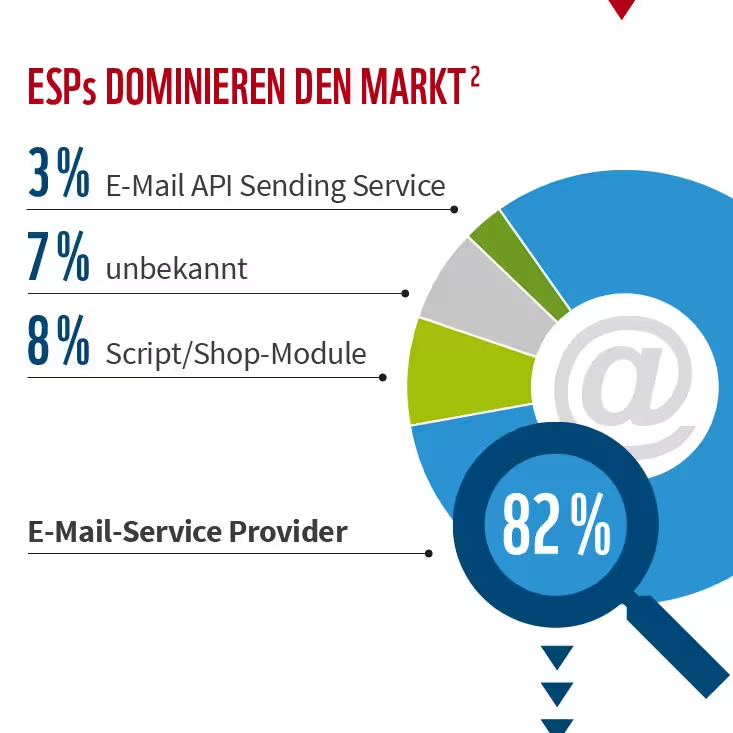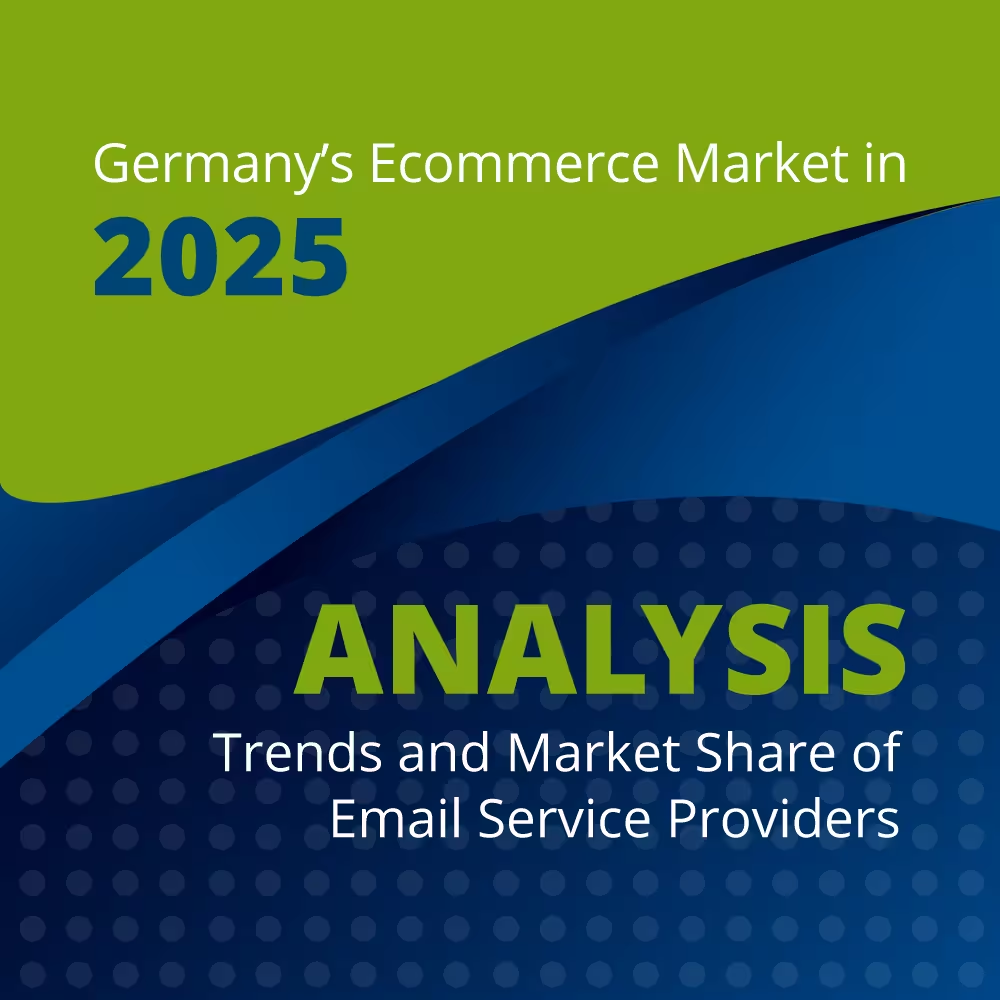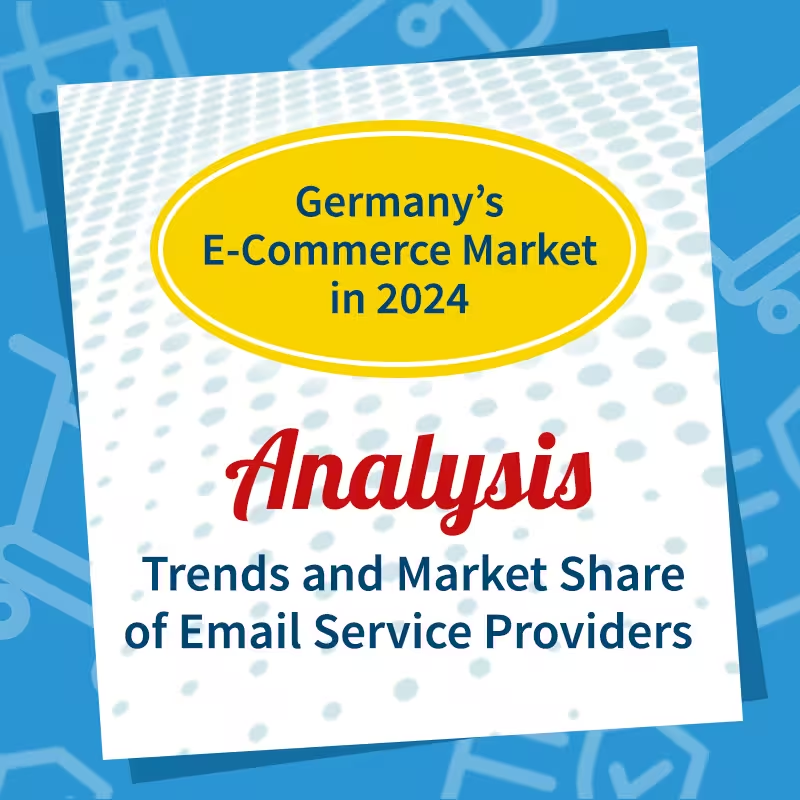Study on email marketing in e-commerce 2018
For the EHI Retail Institute, we examined the email marketing of 1,000 online shops, which the EHI Retail Institute identified as the highest sales in Germany.* Which of these shops actually send promotional emails? What are the most frequently used email delivery platforms? How are email subscriptions promoted?

Here you can find the latest analysis results for Email marketing of the top 1000 e-commerce companies in Germany 2025
This is how online shops in Germany do email marketing.
In cooperation with the EHI Retail Institute, we examined the email marketing of 1,000 online shops, which are among the most profitable in Germany, for the “E-Commerce Market Germany 2018" study. For this purpose, the e-commerce operators identified by EHI were subscribed to newsletters for an analysis period of at least three months — provided that registration was also possible without a purchase. To identify the email systems, the sent newsletters were searched for features that uniquely identify the sender. In detail, we examined which online shops sent marketing emails during the investigation period, which platforms were used and how email subscriptions were advertised.
1. Email marketing is far from dead
Almost 95% of all examined e-commerce operators* offer an email subscription. This means that email marketing is still one of the absolute standard communication measures for online shops.
2. Every fourth person sends (almost) nothing
Email marketing requires emails — but some shops don't want to overdo it: We were able to sign up for a newsletter from 95% of the shops, and we also received emails from 936 stores. However, we only received 1-2 emails from around 25% of shops with an email subscription** during the 3-month investigation period. The double opt-in email and registration confirmation have already been included.
3. ESPs dominate the market
The vast majority (82%) of the online shops** examined send their emails via an email marketing platform (email service provider, ESP), i.e. offers that have been created specifically for email marketing requirements and provide the usual functions for producing, sending and tracking mass advertising emails as well as list, opt-in and opt-out management. This also includes omni-channel marketing suites that not only serve the email channel, but also enable campaigns to be managed via web, banners, social media, messengers, SMS and print.
3% of the shops analysed use a “sending service”, i.e. a solution that can be connected directly to the shop system (or even other in-house systems) through interfaces (APIs). In these cases, the in-house system is usually responsible for target group selection, automation and sometimes templating, while the sending service ensures dispatch, deliverability and tracking. These setups are usually more positive for developers and less so for marketers. Only a small proportion of shops use their own solutions or their shop's shipping solution (7.4%) to send emails. At 7%, we could not identify a shipping system. These shops face the challenge of managing topics such as mail server configuration, shipping control and email deliverability themselves or relying on the expertise of their shop provider.
4. Wide variety of systems used
The market for email platforms is still fragmented and the offer is confusing: We were able to identify 64 different email service providers (ESP) in the analysed online shops ***. 89% of these shops use one of the 20 most common platforms according to this study; three quarters of all companies (74.5%) use one of the 10 most common solutions. From an economic theory perspective, the market for email platforms has thus just crossed the threshold of “low” to “medium” concentration. It will be exciting to see how this trend continues.
5. The market shares of email service providers in Germany
Here you can see which email marketing delivery solutions are used and how often by the e-commerce companies surveyed ***:
6. Registration: well hidden or immediately visible
Most online shops (89%) * make it easy for interested parties to subscribe to their newsletters — but not all! At least 11% of e-commerce websites had no reference to the newsletter at all on the homepage or in the header or footer of the shops: In 6.5% of online hops, you could only sign up for email news by creating a user account, and at 4.2%, the newsletter was only found via a search query on the website or via Google search and is therefore likely to be virtually invisible to “normal” users. On the other hand, just under 16.6% of online shops also use pop-up layers to actively promote their email subscriptions. And when pop-ups are used to refer to the newsletter, the subscription is usually also incentivized (74.8%).
7. Incentives are widespread
Almost 42% of all shops incentivized newsletter subscription, for example with vouchers or free delivery for initial orders.
Method and population
* Basis: The 1,000 best-selling German B2C online stores for physical goods in 2018, determined by EHI Retail Institute for the study “E-Commerce Market Germany 2018", sorted by e-commerce sales in fiscal year 2017. The study can be ordered here.
** Basis: 936 of the 1000 shops that sent us emails during the investigation period of at least 3 months.
*** Basis: 768 of the 1000 shops that sent us emails via a shipping platform identified as ESP in the investigation period of at least 3 months: The percentage market share is calculated from the number of companies for which the respective ESP was identifiable.
Mailjet
















